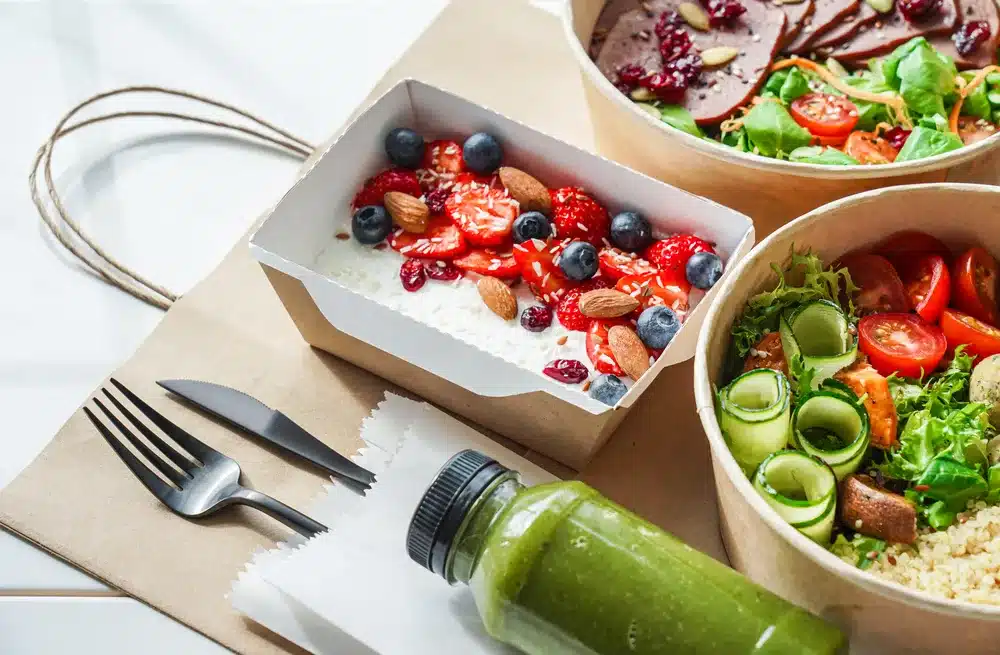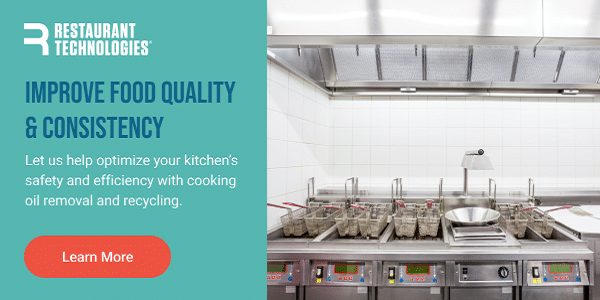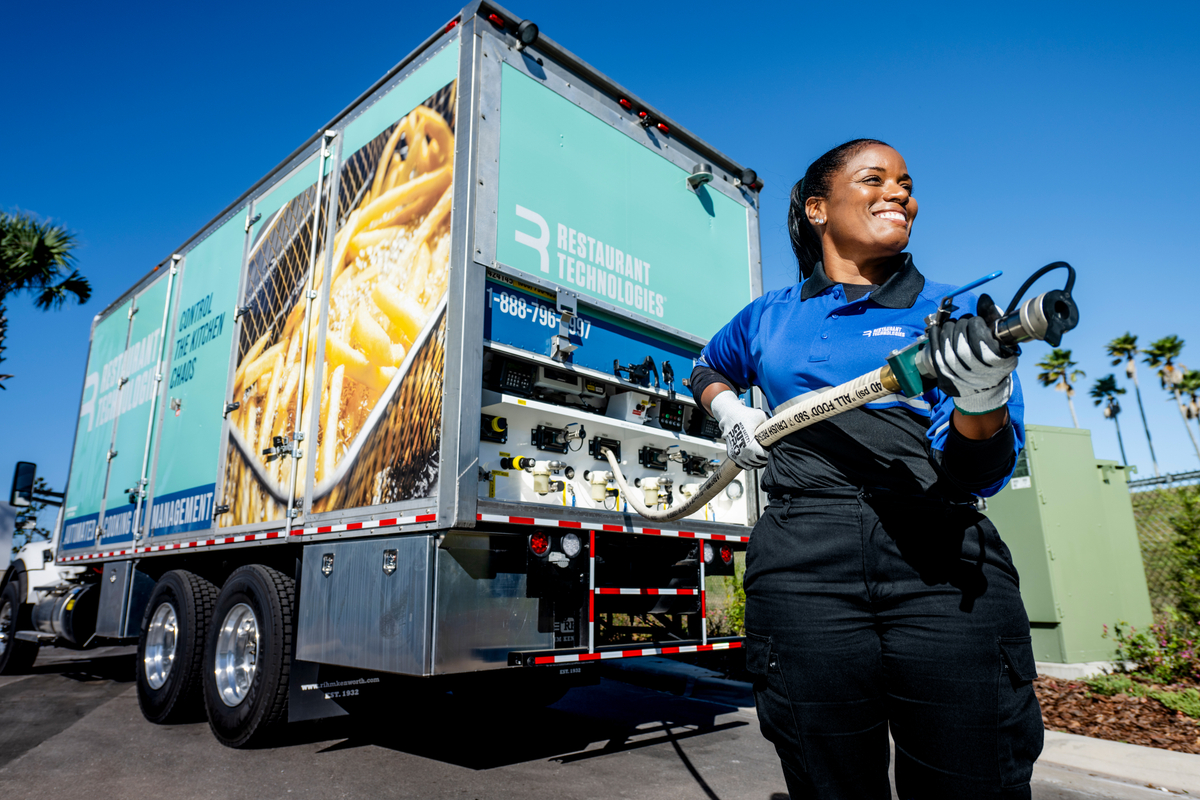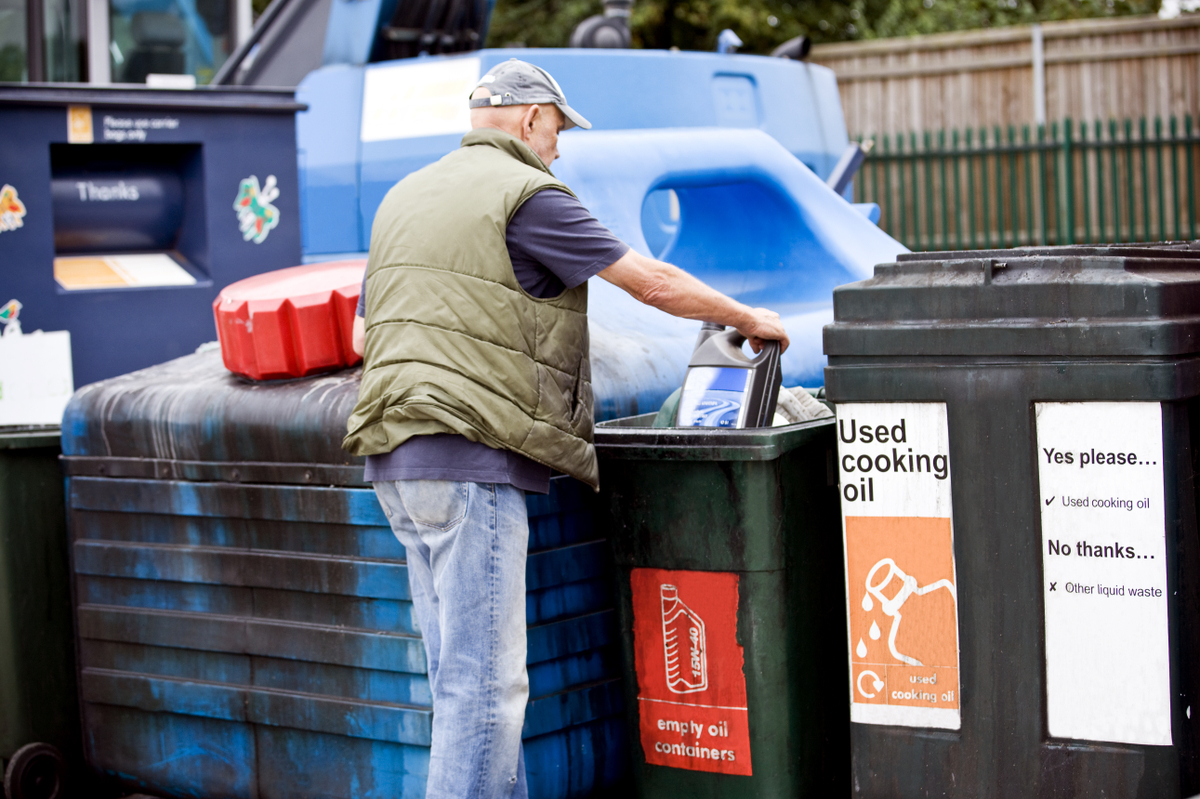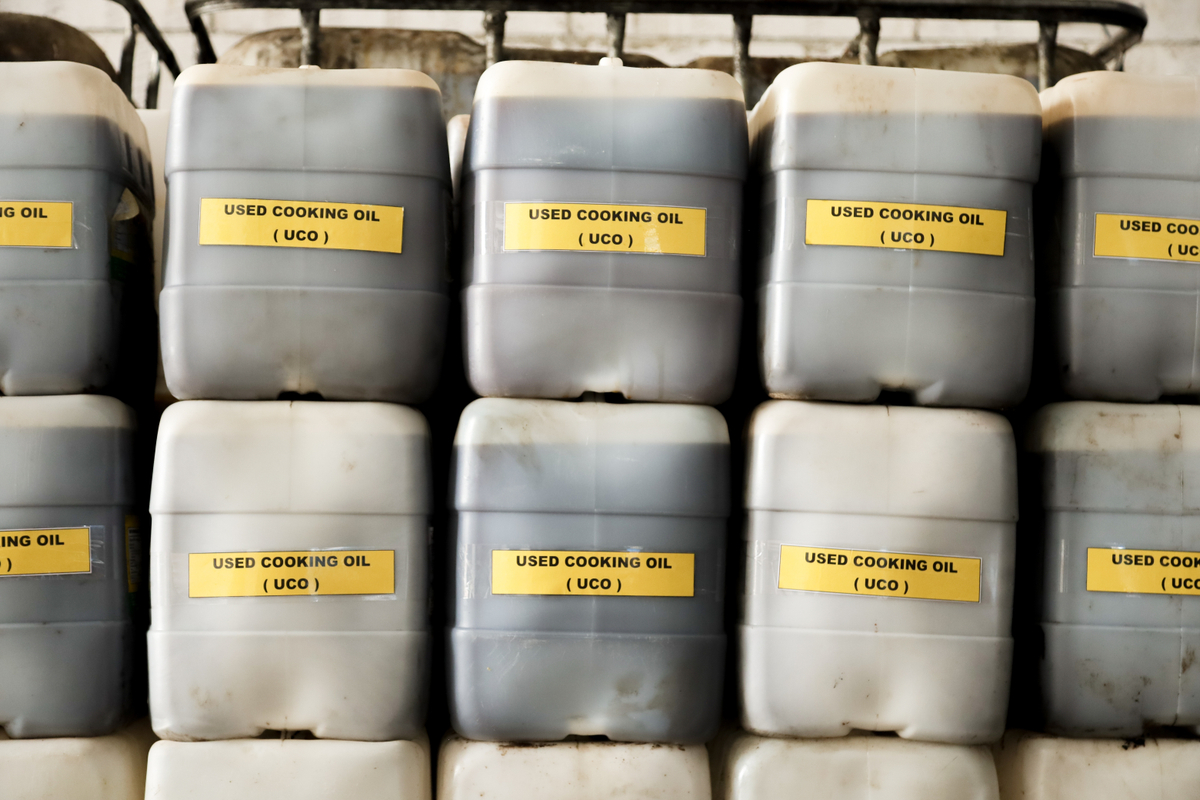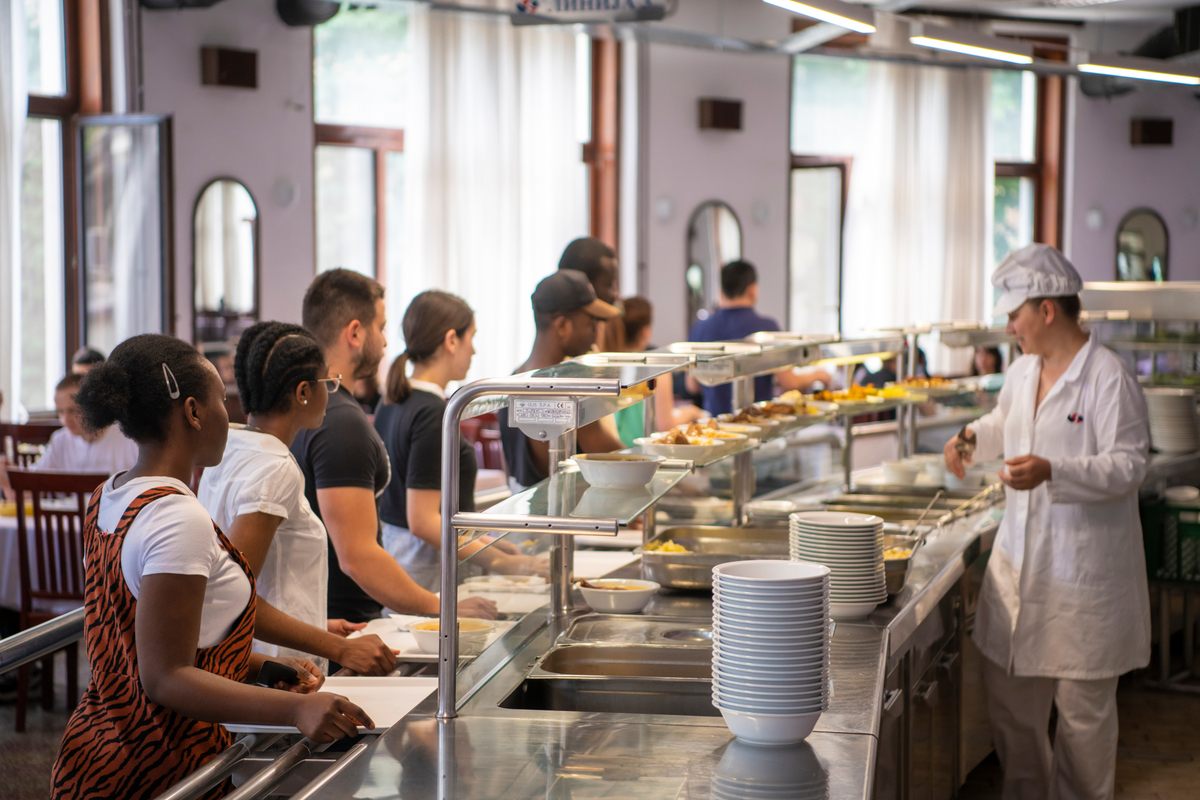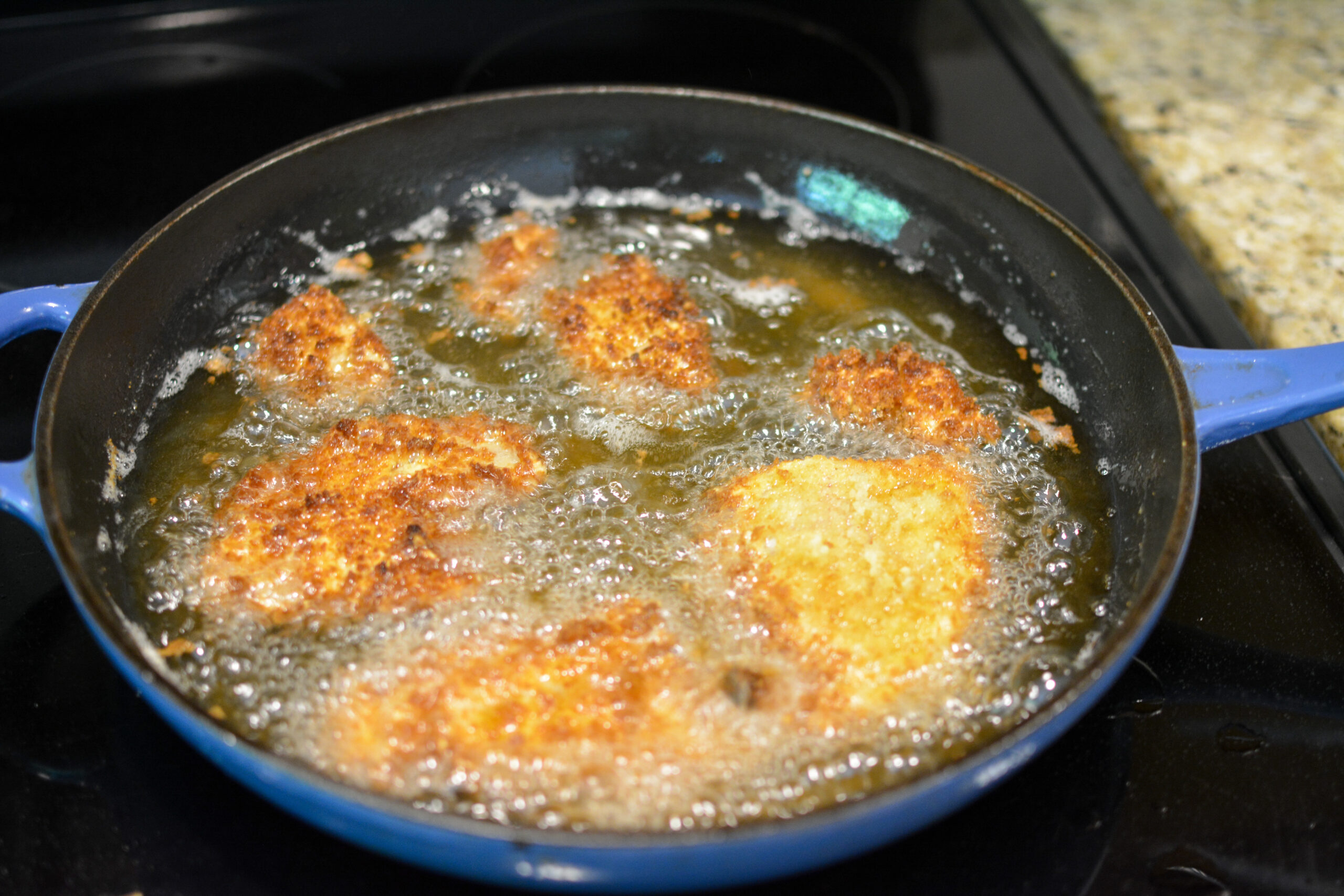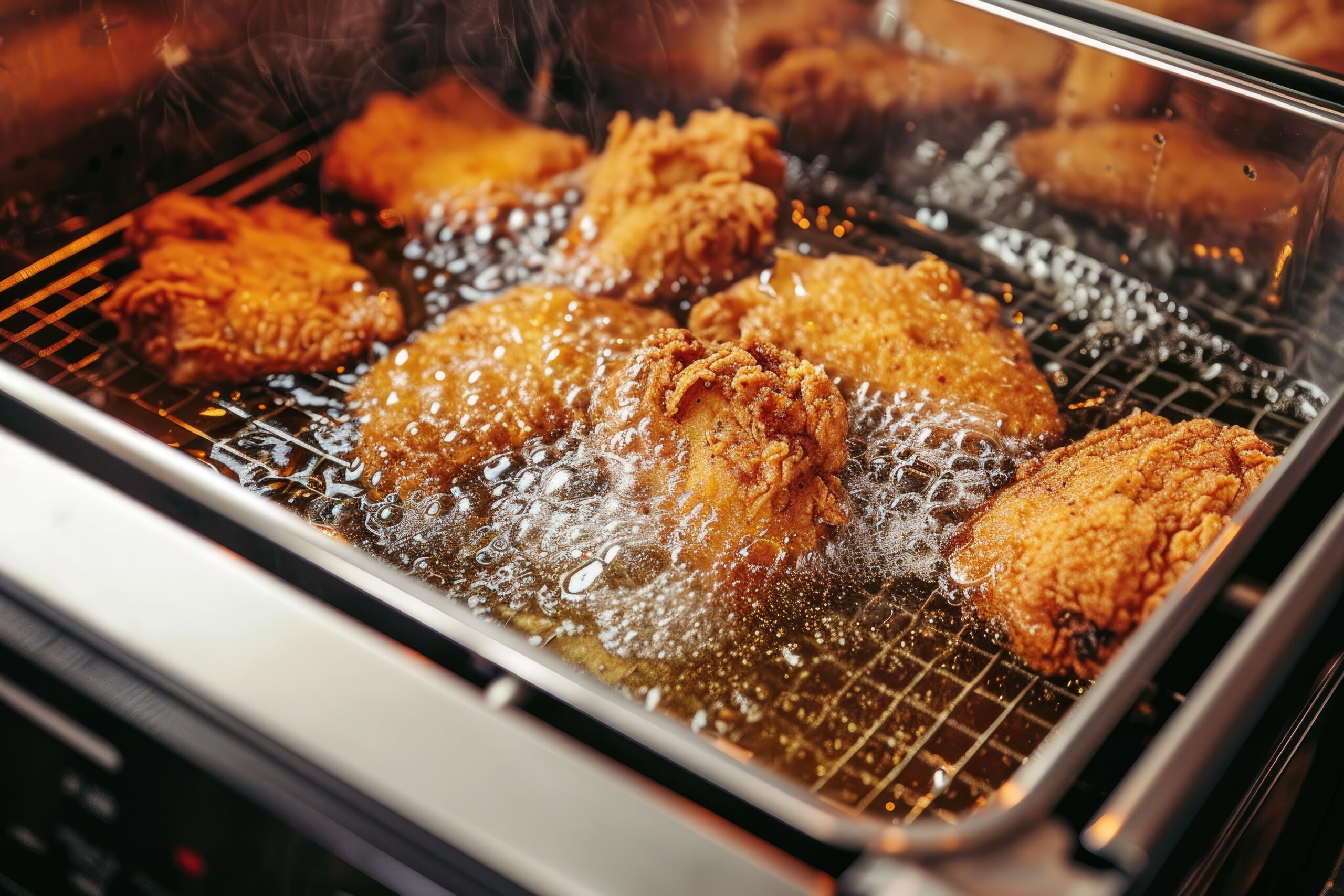From pop-ups and food trucks to fine-casual venues and outdoor-only dining options, the restaurant scene has proved to be one of the most dynamic and adaptable industries in contemporary culture.
Now, we can add ghost kitchens to the list of fresh dining concepts. What was once a niche part of the restaurant world has exploded in popularity and is only expected to sustain its trendiness. In fact, predictions suggest ghost kitchens will become a 157.26 billion dollar market by 2030.1
If you’re thrilled by the idea of jumping onto the bandwagon but are at a total loss of where to begin, consider this guide your square one. Here’s how to start a ghost restaurant—and why more and more entrepreneurs are joining the virtual restaurant fad. Plus, we have some tips on how to automate your commercial cooking oil management and streamline back-of-house operations.
What is a Ghost Kitchen?
Put simply, ghost kitchens are the true essence of a commercial kitchen.2 Unlike a commercial restaurant kitchen that’s used to whip up dishes for a crowd in the dining room or on the patio (and staffed by both front-of-house (FOH) and back-of-house (BOH) staff members), a ghost kitchen exists solely to prepare food for delivery.
The Rising Popularity of Ghost Kitchens
The pandemic radically changed the restaurant landscape when venues across the world were forced to shutter their storefronts. Established and budding restaurants shifted from on-site dining to on-the-road options, with no small thanks to food delivery apps like GrubHub, Uber Eats, Instacart, and DoorDash.
The concept thrived. Indeed, sales from meal delivery services skyrocketed 162% in April 2020 and have continued to grow by 5% every year.3
Even though diners are now free to savor meals inside restaurants, many are choosing to enjoy restaurant-quality dishes from the comfort of their homes. Ghost kitchens are the solution to this, enabling chefs and restaurateurs to continue pleasing their patrons without the need, and overhead expenses, of a brick-and-mortar location.
Today, a stunning 51% of restaurants use dark kitchens, and that percentage is only expected to climb as food delivery continues to dominate dining trends.4
How Do Ghost Kitchens Work?
Also known as “dark kitchens” and “cloud kitchens,” ghost kitchens are shared commercial kitchens that operate out of a variety of sites, like:
- Chain restaurants5
- Unused retail spaces
- Hotels
- Warehouses (with multiple ghost kitchens)6
Within these spaces, chefs and their partners have access to the primary pieces of kitchen equipment and tools they need to prepare food (such as ovens, hoods, sinks, and fryers). While a ghost kitchen business doesn’t have a physical storefront, some may be located in industrial complexes complete with parking lots where potential customers can drive right in to pick up their online orders.
Is it Profitable to Open a Ghost Kitchen?
Potentially, yes.
Generally speaking, ghost kitchen owners can either run their digital restaurant autonomously or team up with a chain or independent restaurant to create and distribute their dishes. In these cases, the restaurant you partner withholds a small part of the profit. The restaurant ROI (Return on Investment) can be significant due to the lower overhead costs.
All said, the average profit margin for ghost kitchens veers between 15% and 25% of total revenue.7
Tips for managing a restaurant effectively, especially a ghost kitchen, include:
- Maintaining a lean operation
- Utilizing high-tech solutions for order management and delivery logistics
- Consistently analyzing market trends to adapt swiftly to changing consumer preferences.
By considering these elements, you are not just starting a ghost kitchen; you are setting the stage for a potentially lucrative business venture in a fast-evolving culinary landscape.
How Much Does it Cost to Open a Ghost Kitchen?
One of the most attractive aspects of opening a ghost kitchen is that, in the absence of typical overhead costs like maintaining a full staff and paying a lease on a premium space, they tend to have significantly lower startup costs than brick-and-mortar establishments and even food trucks.
And yet, just as traditional restaurants range from quick service restaurants (QSRs) to Michelin-starred fine dining establishments, ghost kitchens can vary dramatically in terms of concept and price. Meaning, that startup costs for opening a cloud kitchen can range anywhere from $10,000 to well over half a million dollars.8
The Financials of Starting a Ghost Kitchen
Startup costs that run between five figures and seven may seem wild until you figure in the factors that undoubtedly affect the amount it takes to get a ghost kitchen business off the ground. These factors include your ghost kitchen’s:
- Size
- Location
- Kitchen staff size/labor costs
- Software
- Branding and marketing
- Inventory
- Licensing and permits
- Insurance
Naturally, small-scale ghost kitchens require substantially less than large enterprises, which makes them especially appealing to chefs and entrepreneurs who want to test out a restaurant or menu concept before investing in a brick-and-mortar affair.
Financial Options for Opening a Ghost Kitchen
If you’re eager to set up a ghost kitchen, you may be delighted to learn that there are several ways to secure the capital you need:
- Traditional bank loans
- Business line(s) of credit
- Small Business Administration (SBA) loan
- Personal loans
- Crowdfunding
Additionally, you may want to consider building a strategic partnership with an investor, whether it’s a reputable food brand or a popular local farm.
Planning Your Ghost Kitchen
Financials aside, opening a dark kitchen isn’t simply a matter of renting a kitchen space to start rolling out your pasta bolognese and lasagna unless you already have a large, established following or want to turn a profit.
The following steps are an imperative part of launching a successful business:
- Determine your ghost kitchen’s unique concept – Perhaps you’re dreaming of starting a digital-only artisan pizzeria for affluent young professionals. Or maybe you want to turn out bar bites for college kids in your city after the pubs have closed. Whatever the case may be, your ghost kitchen concept should resonate with a specific demographic (and your passions) and stand out from the local competition.
- Develop your menu – Unlike a traditional restaurant that might offer its patrons excellent ambiance, live music, or state-of-the-art cocktails, food is the exclusive focus of a ghost kitchen. To that end, craft a menu that not only mirrors your distinct concept but is also realistically priced and filled with dishes that can be assembled easily (and travel well).9
- Choose your ghost kitchen model – The ghost kitchen model you select should be able to accommodate the dishes you’ve settled on when designing your menu, as well as the size and scale you envision for your operation. Depending on your needs and budget, this may be a commissary kitchen, an industrial (or commercial) kitchen, an incubator—or temporary—kitchen, a kitchen pod, or a traditional, food delivery-only kitchen.
- Legalize your restaurant operations – You might not have a physical presence, per se, but you still need a legitimate one. To that end, a few of the most commonly required licenses and permits you’ll need include a:
- Food service license
- Business License
- Seller’s Permit
- Employee health permit
- Zoning permit
- Prioritize marketing – One of the biggest challenges commercial ghost kitchen owners face is building and sustaining buzz about their operation, to say nothing of letting people know about their very existence in the first place. While physical venues may draw in foot traffic, you can lure in digital attention and potential customers by creating a solid, enticing brand and leveraging:
- Social media
- Email marketing
- An SEO (and geo)-optimized website
- Digital marketing, such as pay-per-click ads
- Select your packaging – The packaging you choose is as much a part of your commercial ghost kitchen’s brand as your logo. (It’s also a superb way to expand brand awareness.) This too should align with your restaurant business theme and target audience while also taking into account your budget and sustainability.
As you might imagine, this is only a glimpse into the particulars of opening a ghost kitchen. You’ll also have to secure suppliers for your ingredients (according to the scale of your business), hire and train your team, create a distribution strategy, and, as a digital-only business, select your technology.
Is a Ghost Kitchen Worth It?
Only you can answer this question, but the escalated interest in ghost kitchens—from investors, entrepreneurs, and consumers—indicates that they can be a terrific venture that will allow you to flex your culinary creativity and marketing muscles.
That said, it’s important to weigh the potential drawbacks of setting up a dark kitchen, namely:
- Limited visibility
- Plating limitations
- Environmental strain (due to packaging)
And yet, we would argue that the perks of launching a ghost kitchen outweigh their cons:
- Reduced operating costs
- A lower level of risk when compared to traditional establishments
- Maximized resources
Above all, a ghost kitchen can be fertile ground for experimenting with the food you create and the name you might ultimately want to make for yourself.
Enhancing Your Ghost Kitchen Operation with Restaurant Technologies
Ghost kitchens are trending for a myriad of reasons, from the low startup costs and versatility they provide their owners to the convenience they provide customers. And while opening a ghost kitchen may involve plenty of tasks, we can add some ease to your obligations—and take some of your responsibilities right out of your hands.
That’s because Restaurant Technologies’ automated restaurant oil management handles a variety of duties, including cooking oil management and automated hood cleaning. Ultimately, by partnering with Restaurant Technologies, you’ll have more time and energy to do what you love most: create delicious meals that satisfy your customers.
Build a flourishing ghost kitchen with Restaurant Technologies today.
Sources:
- Coherent Market Insights. Ghost kitchen market analysis. https://www.coherentmarketinsights.com/market-insight/ghost-kitchen-market-5936
- Toast. How to open a ghost kitchen: starting a ghost kitchen business steps. https://pos.toasttab.com/blog/on-the-line/how-to-start-a-ghost-kitchen
- USA Today. Ever heard of ghost kitchens? These virtual restaurants are changing the delivery industry. https://www.usatoday.com/story/life/food-dining/2023/10/17/what-is-a-ghost-kitchen-meaning/70606643007
- Back of House. The pros & cons of cloud kitchens & ghost kitchens. https://backofhouse.io/resources/cloud-kitchen-ghost-kitchens-pros-cons
- Minnow. What ghost kitchens mean for commercial real estate. https://www.minnowpod.com/blog/what-ghost-kitchens-mean-for-commercial-real-estate
- The Food Corridor. Everything you need to know about cloud kitchens (aka ghost kitchens). https://www.thefoodcorridor.com/blog/everything-you-need-to-know-about-cloud-kitchens-ghost-kitchens
- UpMenu. How much do ghost kitchens make? https://www.upmenu.com/blog/how-much-do-ghost-kitchens-make
- UpMenu. How much does it cost to open a ghost kitchen in 2024? https://www.upmenu.com/blog/how-much-does-it-cost-to-open-a-ghost-kitchen
- Lunchbox.io. Tips for designing a solid ghost kitchen menu. https://lunchbox.io/learn/ghost-kitchens/ghost-kitchen-menu
